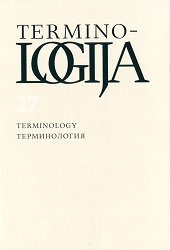XIX a. pab.–XX a. pr. dvižodžiai sudėtiniai pavadinimai su pagrindiniu dėmeniu liga ir būdvardžiu reiškiamais priklausomaisiais dėmenimis
Two-word Composite Names of Late 19th – Early 20th Century with liga as Head Element and Dependent Elements Expressed by Adjectives
Author(s): Palmira ZemlevičiūtėSubject(s): Lexis, Semantics, Pragmatics, Historical Linguistics, Health and medicine and law, 19th Century, Pre-WW I & WW I (1900 -1919)
Published by: Lietuvių Kalbos Institutas
Keywords: medicine; term; two-word composite name; name of disease; head element; dependent element;
Summary/Abstract: The article sets out to analyse two-word composite names with liga as the head element and dependent elements expressed by adjectives, which were used in the medical press of the late 19th century–early 20th century written in popular scientific style (books, booklets, newspaper and calendar articles). It attempts to determine by which semantic aspects dependent elements describe the head element liga and what specific features of expression of these elements are. The dependent element may describe the head element liga by various semantic aspects – by the latter’s association with some non-material (usually) (time, type of manifestation, etc.) and material (rarely) (organism, body liquid, organ, etc.) matter. Dependent elements take the form of simple, pronominal and derivative (in most cases) adjectives. In rare cases the dependent elements of the composite names with the head component liga indicate superordinate concepts – they mark a general specific feature and should be considered proper terms. In most cases dependent elements specify a temporary quality and should therefore be considered descriptive word phrases.
Journal: Terminologija
- Issue Year: 2020
- Issue No: 27
- Page Range: 233-257
- Page Count: 25
- Language: Lithuanian

